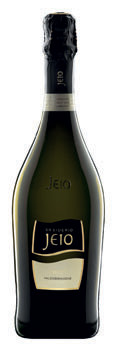Get Premium access to all the latest content online
Subscribe and view full print editions online... Subscribe
Adam Lechmere dips into the world of sparkling wines, and finds that many of them offer more bang for your buck than the traditional bottle of bubbly
There are many easier things to write about than alternatives to champagne. If I was doing a column on German riesling alternatives, for example, I could mention the great Australian versions of the grape, among others. Bordeaux blends that don’t come from Bordeaux? Easy – from China to South Africa, there are wonderful wines being made from cabernet sauvignon, merlot, cabernet franc and the like. But substitutes for champagne? It’s a bit like suggesting substitutes for foie gras. Surely you either drink champagne or not, and anything else is either second best or just a different thing altogether?
Well, up to a point. Of course, there are champagnes that can’t be bettered – a couple of weeks ago, I tried a 2002 vintage from Henriot, a wine that costs no more than about £25, that was as sublime a sparkler as I’ve tasted for years. At this time of year, supermarkets are falling over themselves to discount champagne simply to get you through their doors so you’ll buy their mince pies and Roses chocolates. But there are many, many common, overpriced champagnes whose sales rely on the fact that they belong to one of the world’s most-known generic brands.
So before you reach for the champagne, think of the great strides the sparkling producers of the world have made. Remember also that many sparkling wines are champagne in all but name – made with the same grapes (pinot noir, pinot meunier and chardonnay), using the champagne method (with a second fermentation in bottle), in which case you’ll see ‘traditional method’ on the label.
I’ve talked about English sparkling wine before – again, a drink that barely featured 10 years ago. But now, as Mike Roberts of multi-award-winning Ridgeview points out, English vineyards have won no fewer than nine top international awards. They are on the map, and there’s no better proof of that than the fact that supermarkets are listing English sparklers as fast as they can. Waitrose is the leader, but Sainsbury’s is following suit.
Seek out the Coates & Seely below – it’s a smart, beautifully made traditional-method wine with a very English heart. I last tasted it at a trade fair in Bordeaux, and its delicate hint of sweet summer hedgerow flowers transported me straight home.
Prosecco is another great example. Ten years ago it was hardly known outside northern Italy, where it is made. But in 2011, for the first time, more prosecco is being drunk abroad than at home. The main reason for its popularity is because it doesn’t taste like champagne. Made with the glera grape, it is lighter, fruitier and sweeter with a more effervescent mousse. The best, like Bisol Jeio, has a very definite acidic backbone: it’s not a lightweight wine. But it is very agreeable.
Most importantly, don’t judge a wine’s quality by its name. Take for example, Jacob’s Creek. It won Silver at the Decanter World Wine Awards last year for its ‘creamy, characterful sophistication and lovely mineral element’. Many champagne houses would kill for such a billing.
This is one of the best cavas around with a powerful dry palate with bright, toasty, nutty notes, citrus flavours and a very fine, mouthfilling mousse. Drink it with olive-based tapas and cured Spanish ham.
Available at:Waitrose

A chardonnay-dominated sparkling from Tasmania, which is becoming increasingly known for its fine sparkling wines. Nutty, citrus and honeysuckle aromas, and a dry, fresh yet creamy palate.
Available at:AG Wines

One of my favourite proseccos. Deceptively light with lovely flavours of apple, pear and ripe peach, set off by zesty acids and effervescent mousse. With only 11.5 per cent alcohol, it’s a superb apéritif.
Available at:Slurp.co.uk

A newcomer – expensive but a very fine example of the best English rosé. Aromas of honeysuckle, rosehip and hedgerow flowers (and a hint of cow parsley). Superb acidity. Drink late morning or early afternoon.
Available at:Coates & Seely

Jacob’s Creek does so much more than cheap and cheerful. An award-winning combo of apples and pears, creamy mouth-feel, excellent acidity and minerality. A food wine – try it with grilled fish with butter or cream.
Available at:Morrisons

Subscribe and view full print editions online... Subscribe